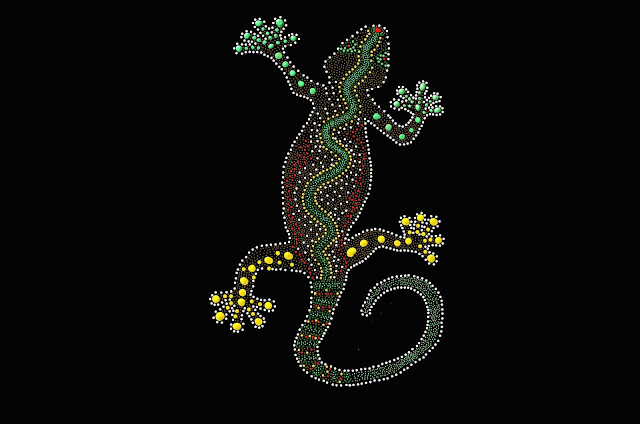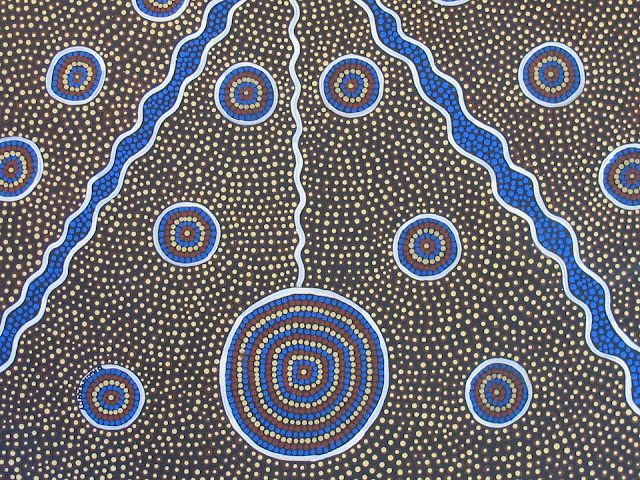This post contains affiliate links. For more information, please see my Terms of Use and Disclosure Policy page. Thank you.
Let's continue our Safari Trip in Australia but let's look at some activities perfect for older children.
On this Safari Trip we will learn about native Australian animals and create a piece of artwork to remind us of our journey. Do you have your passport ready? We are about to land in Sydney.
We are going to visit and learn about three different species of species: kangaroos, emus, and the frilled lizard.
 |
| Red Kangaroo photo from WPClipart.com |
Kangaroo
Probably one of the most famous animals from Australia, next to the Koala (which is not a bear), is the kangaroo – of which there are four species.
- Red Kangaroo
- Eastern Grey Kangaroo
- Western Grey Kangaroo
- Antilopine Kangaroo
- Mammal
- Herbivore
- Lives up to 23 years
- 6 to 7 feet tall
- About 200 lbs.
- Their body is designed for jumping with muscles centered in their tail & legs
- Like a cow, kangaroos eat grass and have similar broad teeth for crushing the plant fibers
- Live in large groups called mobs
- A grown male kangaroo is a boomer
- A grown female kangaroo is a doe
- A baby kangaroo is a joey
Kangaroos have few natural predators – just humans and dingoes. They face habitat loss as well.
Emu
While there may be 60 different species of flightless birds (most of them being different species of penguins), there are only five that are part of the ratite group of birds. Australia is home to the second largest one – the emu.
- 5 to 6 feet tall
- Omnivore
- Long powerful legs to help them run
- Can sprint at 30 mph over a short distance
- Can jump 7 feet straight into the air
- Females lay 5 to 15 green-black colored eggs and then leaves the nest
- Emu eggs are about the size of an avocado
- Males makes the nest and then sit on the eggs
- Dad and the chicks stay together until they are about 18 months old – he protects them and teaches them how to be an emu
- Emus can make a very loud drumming sound
Younger children may enjoy the fictional stories about Edward and Edwina Emus written by Sheena Knowles.
Frilled Lizard
Australia is home to a great number of reptiles including 100 venomous snakes. The frilled lizard is often recognizable because of his unique defense tactics. When it feels threatened by a predator, it unfurls its skin flap which opens around his head like a lion's mane and hisses. If this defense tactic does not work, the frilled lizard will turn tail and run away, skin flap still unfurled as it runs.
- Reptile
- Carnivore – eats mainly insects but will eat small mammals and reptiles occasionally
- Lives up to 20 years
- 3 feet in length
- 1.1 lbs. in weight
- Males are bigger than females
- Lays 8-14 eggs
- Newly hatched babies are able to take care of themselves right away
Indigenous Peoples of Australia
The indigenous or aboriginal people of Australia are considered to be those individuals living on the continent prior to European exploration and colonization. There is a great diversity among the indigenous people which even continues into their artistic contributions. For the purpose of this activity, we will focus upon the 'dot art' of the Central and Western desert.
Note: As in the case of the tales of many indigenous peoples, there is controversy regarding colonialism and the impact of exploration of the 'Age of Exploration' (1400s-1700s). I recommend parents preview websites prior to sharing with children.
 |
| image credit: diapicard from pixabay |
Aboriginal Art
The meaning behind the dot art according to some sources is that Indigenous Aboriginal Art was never supposed to be shared with those outside of specific tribes. So the artwork was modified to make it beautiful but hid the sacred meanings. In the beginning the the art was drawn and then dots were painted on top of it to obscure the meaning and story. Over the years, the dot artwork has changed and grown as each generation put their own stamp upon it.
 |
| image credit: esther1721 from Pixabay |
The dot artwork is the sharing of approved aboriginal stories and histories.
Materials
- Paint
- Rounded Paint Brushes (or Q-tips)
- Drawing Paper
Steps
2. Sketch your image onto your drawing paper.
 |
| These were drawn lightly in pencil so the sketches wouldn't show up in the completed painting as easily. |
3. Paint your image using dots.
4. After your image is dry, hang it up with pride in your house.
 |
| Emu |
 |
| Kangaroo |
Resources
National Geographic Kids: Kangaroo
National Geographic: Emu
National Geographic Kids: Frilled Lizard
Artlandish Aboriginal Art Gallery: Aboriginal Dot Art
More Crafts and Activities
Please be sure to check out the rest of the posts in the DIY Summer Camp Activities Series at Teaching Without Chairs and Preschool Powol Packets. There will be a total of four weeks of fun ideas for preschoolers and older children.
If you are looking for more posts from A Mom's Quest to Teach on animals, please see my posts on how to make a giraffe with construction paper and how to make your own bats. Or if you have preschoolers, why not make some cute Australian animal-themed crafts with them!









We've done the aboriginal style art with the dots a couple of times. Love how your projects turned out!
ReplyDeleteThank you!
DeleteThe dot painting looks like a lot of fun!
ReplyDeleteIt was...very relaxing to focus on something so tiny.
Deletedot painting is fun. yours turned out well. :)
ReplyDelete